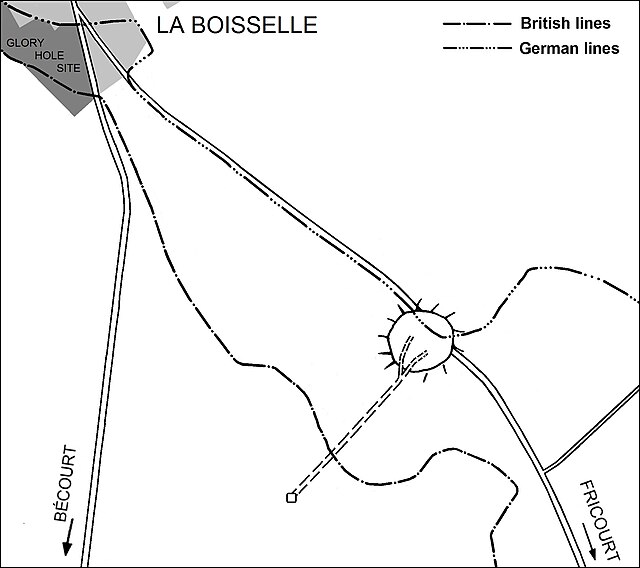The first day on the Somme, 1 July 1916, was the beginning of the Battle of Albert (1–13 July), the name given by the British to the first two weeks of the 141 days of the Battle of the Somme in the First World War. Nine corps of the French Sixth Army and the British Fourth and Third armies attacked the German 2nd Army from Foucaucourt south of the Somme, northwards across the Somme and the Ancre to Serre and at Gommecourt, 2 mi (3.2 km) beyond, in the Third Army area. The objective of the attack was to capture the German first and second defensive positions from Serre south to the Albert–Bapaume road and the first position from the road south to Foucaucourt.
An example of a Lewis gun
60-pounder gun battery
Aerial photograph of a British gas attack from Carnoy to Montauban, shortly before the Somme offensive.
Diagram of the Lochnagar mine
The Battle of Albert is the British name for the first two weeks of British–French offensive operations of the Battle of the Somme. The Allied preparatory artillery bombardment commenced on 24 June and the British–French infantry attacked on 1 July, on the south bank from Foucaucourt to the Somme and from the Somme north to Gommecourt, 2 mi (3.2 km) beyond Serre. The French Sixth Army and the right wing of the British Fourth Army inflicted a considerable defeat on the German 2nd Army but from near the Albert–Bapaume road to Gommecourt, the British attack was a disaster, where most of the c. 57,000 British casualties of the day were incurred. Against the wishes of General Joseph Joffre, General Sir Douglas Haig abandoned the offensive north of the road to reinforce the success in the south, where the British–French forces pressed forward through several intermediate lines closer to the German second position.
French advances on the Somme, 1–11 July 1916
Fokker E.IV, 1916
Royal Aircraft Factory R.E.7
Captured LVG C.II circa 1916








